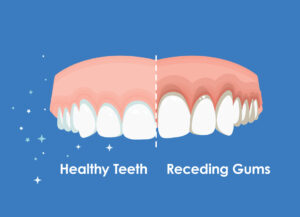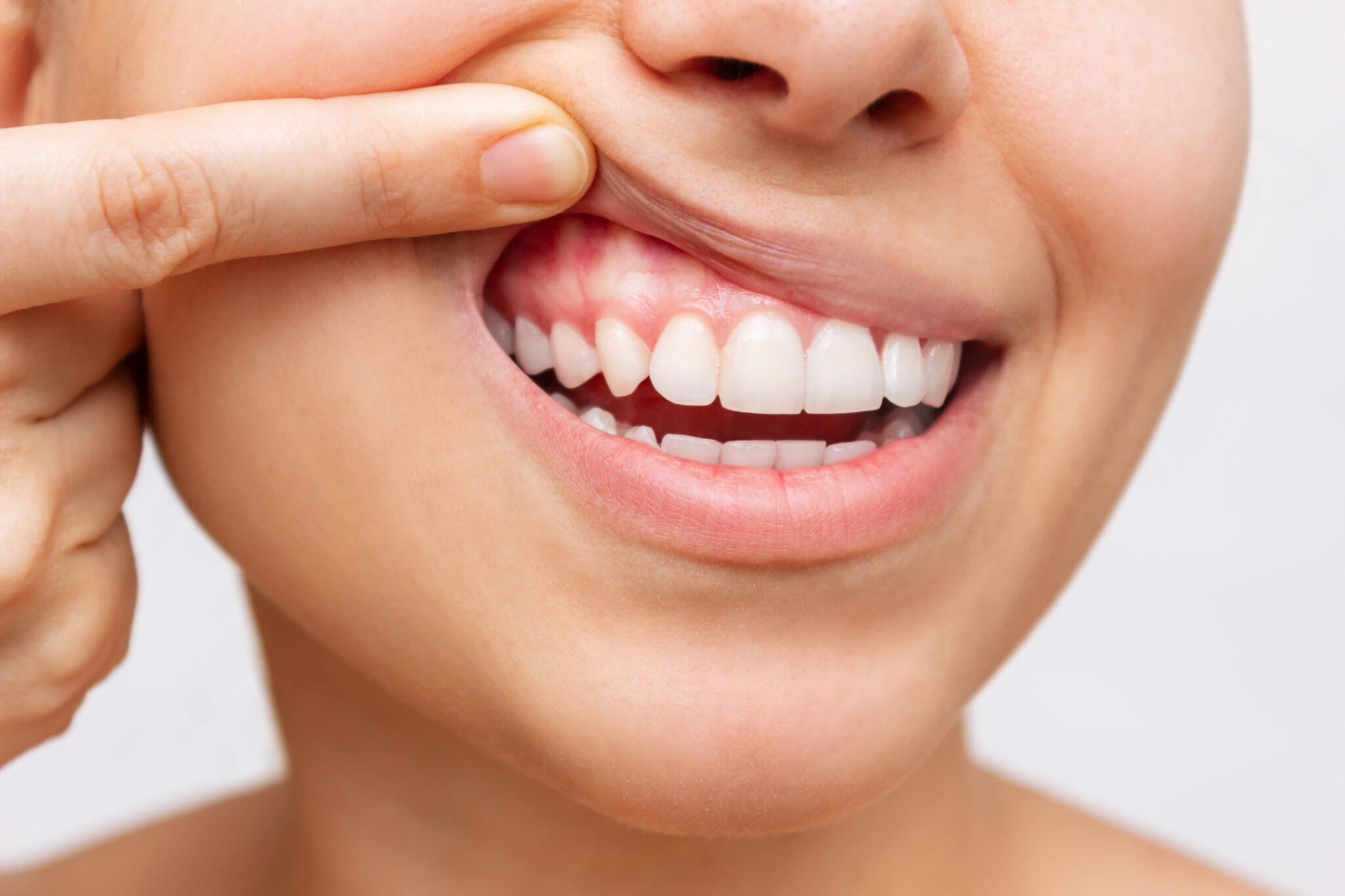We all have different teeth sizes, different gum colors, and some even have what we affectionately call “gummy smiles.” Our gums are important for keeping our teeth healthy and holding them in place. But when your smile starts to appear toothier looking, this may be indicative of receding gums.
How do receding gums start?
Gingival recession (receding gums or “long in the tooth”) refers to the progressive loss of gum tissue. When your gums pull away from your teeth, it leaves more of the tooth exposed, including the roots. It is a gradual process, commonly occurring in adults over 40 years of age. It can begin earlier, though, based on your family history, dental routine, hormonal changes in women, and smoking habits.
Signs of gum recession include:
- Red, swollen gums
- Bleeding after brushing or flossing
- Teeth appearing longer or exposed tooth roots
- Tender or painful gums
- Sensitive and/or loose teeth

Healthy Gums vs. Receding Gums
What are the consequences of gum recession?
When gums begin to recede, bacteria can gather in between the exposed teeth and the gums. If left untreated, this causes the tooth to become loose and susceptible to decay, and even gum disease. Additionally, the longer the recession is allowed to progress, the more cosmetic compromise (such as the growing of gaps between your teeth) it can cause.
Will receding gums heal and how are they treated?
Daily brushing and flossing paired with regular dental checkups and cleanings are the best ways to stay on top of your oral health. They allow your dentist to monitor your gum health. If your dentist recommends seeking treatment for gum recession, they may indicate one of the following procedures depending on the severity:
- Brushing correction – Aggressive or over-brushing can damage the enamel and your gums. Using a soft brush and a proper, gentle brushing technique helps protect your gum tissue.
- Treating existing conditions – Fixing crooked teeth, teeth grinding, and a misaligned bite can help reduce the wear on your gums.
- Treating teeth grinding – Bitesplints/biteguards can help prevent more gum recession and damage to the teeth.
- Treating gum disease – This procedure goes below the gum line to clean hard-to-reach spots to remove buildup and reduce gum inflammation.
Are receding gums reversible? No, gums cannot grow back but the gum line can be restored with proper action. If you think your gums are receding, schedule an appointment with your dentist.

